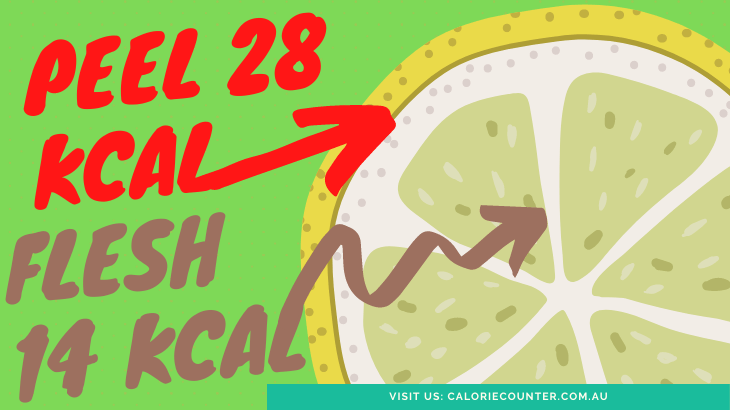Lemon zest is the top part of lemon rind after it has been scraped, cut, grated, peeled, or pared off. The rind is the citrus fruit’s skin. It has two main parts: the outer flavedo and the inner albedo, also known as the mesocarp, or pith.
Zest of lemon is a common baking ingredient, think lemon meringue pie and lemon cake. It is also used in just about anything that calls for a bit of zing, like gin cocktails and lemon and herb chicken.
Here’s why lemon rind zest is interesting to people who like to know food and count calories:
More Calories than the Lemon

Lemon rind has far more calories on a weighted basis than either lemon juice or lemon fruit flesh. 100g of lemon rind contains 28 calories, compared to 14 calories for the flesh and 17 calories in lemon juice. Now, of course it is unlikely that you would substitute equal weights of zest for juice but even so, it is surprising to know that the rind of citrus fruit is much more nutritious than the “sweet” centre!
Antioxidants Galore in Lemon Rind
The rind is where the antioxidants live. Lemon peel is packed with Vitamin C and D-limonene which act to reduce the negative effects of “free radicals” in the body. The whole antioxidant field is a huge area of study right now, owing to their potential to prevent cancer and slow the ageing process. Citrus zest seems like a good way to get lots of antioxidant goodness in small, natural, tangy parcels so why not?
A Little Lemon Rind goes a Long Way

One carefully zested medium-sized lemon rind will yield about a tablespoon’s worth of wonderfully fragrant flavedo. This is more than enough to add to a batch of six large blueberry muffins for a fresh aroma and distinct citrusy aftertaste. If you happen to squeeze a lemon, don’t just dunk the peel into the bin. Chop it up to release the scent and deodorise your environment, after all, cooking is about more than just eating!
You can make Candied Lemon Peel
Yes, it is calorie-dense but at least these tangy strips are better for you than store-bought sour worm gummies. To make candied lemon, simply slice up some lemon peel and bring to the boil in a good amount of water, then drain. Repeat with fresh cold water and again, drain.

(Draining and re-boiling will reduce the bitterness of the mesocarp. If you like bitter lemon, then skip the draining part.)
Then, add a cup of water and a cup of sugar to the twice-drained lemon. Bring to the boil, reduce heat and simmer until the peel becomes somewhat see-through. You can then remove the peel, cool-dry it and shake up it in a container of fine sugar. Voila – you’ve just made your own lemon rind candy.
The leftover lemony syrup in the pot can become the base of a fruit stew or something more wickedly decadent.









